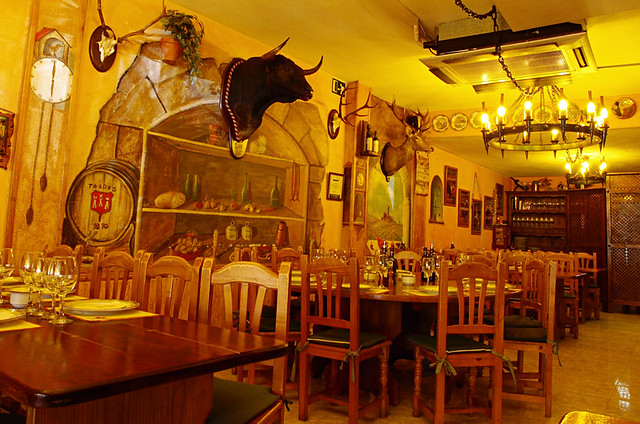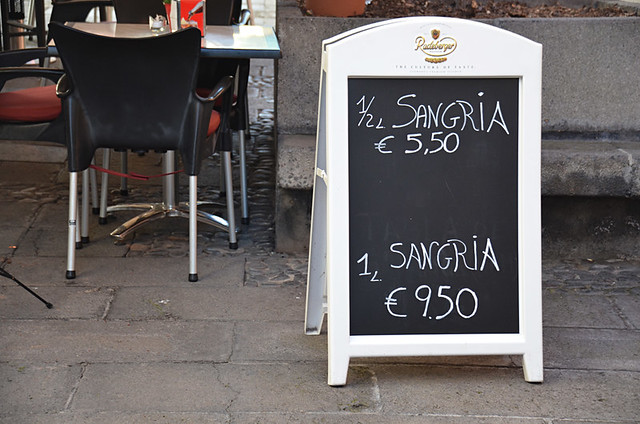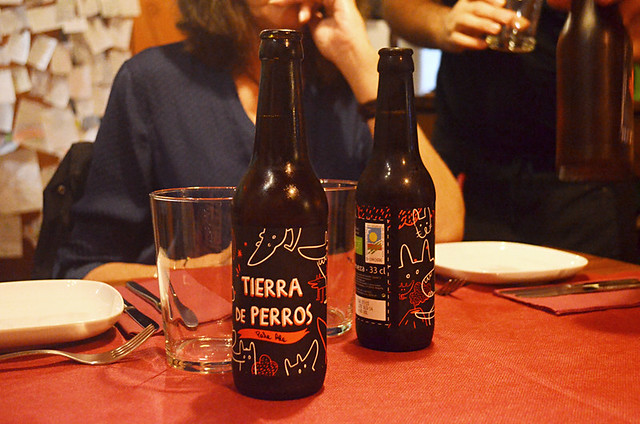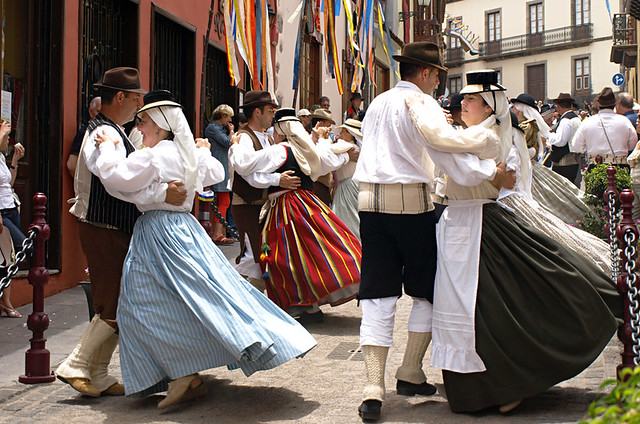Why you should seek the sun but not sangria on Tenerife.
“Soy canario, no soy español.”
“I’m Canarian, I’m not Spanish.” It’s something we’ve been proudly told countless times over the years in the Canary Islands. When the person saying it has referred to me as being English I usually respond with a counter “soy escocés, no soy inglés” (“I’m Scottish, I’m not English”) which usually breaks the ice as they immediately know I understand where they’re coming from.

Canarios have an identity which is quite different from Spanish, something not always realised by people visiting what are Spanish islands. A way to look at it is to think of it like the differences between England, Scotland, Northern Ireland and Wales… especially Scotland and England.
A good number of visitors to Tenerife arrive looking for ingredients which are quintessentially Spanish; however, those ingredients might have nothing at all to do with Tenerife or the other Canary Islands.

It’s a different language
Before we moved to Tenerife we spent a year learning rudimentary Spanish at the Cervantes Institute in Manchester, a great centre and a meeting place for Spanish in the city. Our teachers came from mainland Spain and we were taught Castilian Spanish. Subsequently the first time we asked for a ‘therbetha’ (cerveza) on Tenerife our request was met with an unmistakably Canarian “¿QUÉ?”
Canarian Spanish is more like South American Spanish, so no lisping when it comes to ‘s’. It took us years to learn to stop saying ‘th’.
In purpose built resort areas many hotel staff come from mainland Spain or South America so even when visitors in those areas hear Spanish speakers they might not be actually be hearing Canarian Spanish.

Spanish and Canarian restaurants aren’t the same
People often ask where they can find a good Spanish restaurant on Tenerife when they actually mean a good local restaurant. Spanish restaurants and Canarian restaurants aren’t the same. When gastronomy awards are handed out for the best restaurants on Tenerife, Spanish and Canarian are split into different categories. So Meson Castellano in Playa de las Américas is one of the best Spanish restaurants on Tenerife, but it’s not a Canarian restaurant. A few years ago a waiter from a restaurant specialising in Galician cuisine quietly whispered in my ear “we serve good Spanish dishes, not basic Canarian food.” At one time he might have had a point but Canarian gastronomy on Tenerife these days is deliciously diverse and often very inventive.

You can usually tell restaurants which are Spanish rather than Canarian as they tend to broadcast which region the dishes they serve are from. Similarly Canarian restaurants usually display their Canarian credentials. If you want to be sure, go to a guachinche, an authentic one, as they only exist in their truest form on Tenerife.
Sangria – it’s Spanish
Lots of people like to sit under the Canary Island sun sipping from a jug of refreshing sangria. It’s an enjoyable thing to do, but it’s not ‘going local’. Sangria is most definitely Spanish. That’s because canny owners know it’s something a lot of people want as they connect it with a holiday in Spain. It’s exactly the same with paella, which is a Valencian speciality. Rice dishes are common on Tenerife, but they’re usually listed as ‘arroz’ dishes on traditional menus.

The popular attitude to drinking wine on Tenerife is a prime example of confusing Spanish and Canarian. It used to be common on Tripadvisor when potential visitors asked about trying the local wine that people who replied would invariably recommend mainland Spanish brands. On one occasion there were six pages of suggestions and not one mentioned a Tenerife wine.
There are loads of bodegas producing whites, reds, rosé and even cava on Tenerife, I’ve lost count of the number of different brands. And the wine is good, some winning awards on the international stage. Our wine rack is made up entirely of Canarian wines as we prefer their flavours to most Spanish mainland wines.

In recent years the craft beer market has boomed on Tenerife and other Canary Islands. Dorada was always a local favourite but it can be a bit lightweight. Now there are beers with more personality so instead of San Miguel ask for a brand like Tierro de Perros from Los Realejos if you want a good, local brew.

Lets’s face the music and salsa
One of areas where differences are most obvious is when it comes to music and dance. Another popular question from potential visitors is to ask where they can enjoy good flamenco. Despite the fact there is always a high energy show featuring flamenco at the Piramide de Arona in Las Americas, flamenco has nothing to do with the Canary Islands, it’s an Andalusian speciality. But, as is the case with sangria, shrewd business owners know people hope to see flamenco when they visit Spain, even a part of Spain which is closer to Africa. Subsequently hotels and some bars regularly include flamenco dancers and guitarists as part of their entertainment programme. We were entranced by some sizzling flamenco at the Hard Rock Hotel recently. But it’s not local.

However, plenty of hotels also include Canarian folk groups in their entertainment programmes so visitors can have a taste of traditional music and dancing from the island. But a hotel lounge is nothing like experiencing these groups at one of the many local fiestas across the island where there’s a completely different vibe and the music and dancing has more meaning when seen in a more natural environment as part of traditional celebrations.

After dark these fiestas also tend to reveal where the real connection with the islands lies. The music is usually reggeaton or courtesy of maquinaria bands and the dance moves are sultry salsa or merengue. Spain might be the mother country, but the feel is distinctly South American.
But that connection is a topic for another day.




Be the first to comment